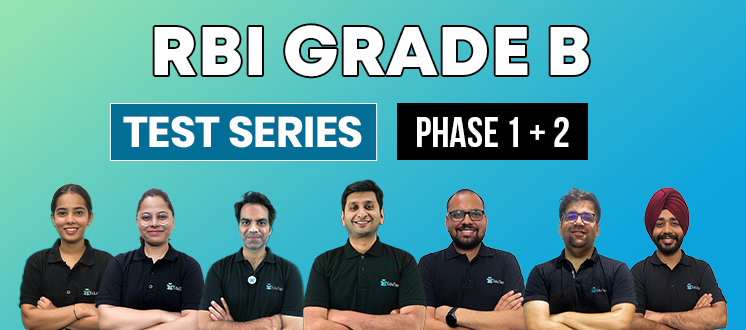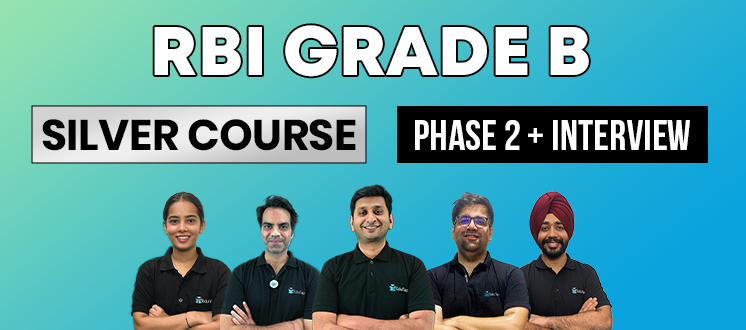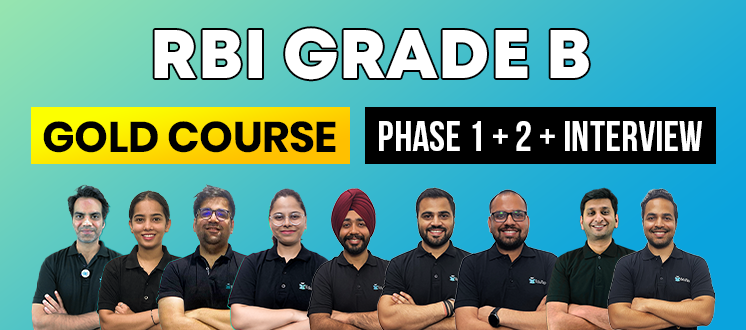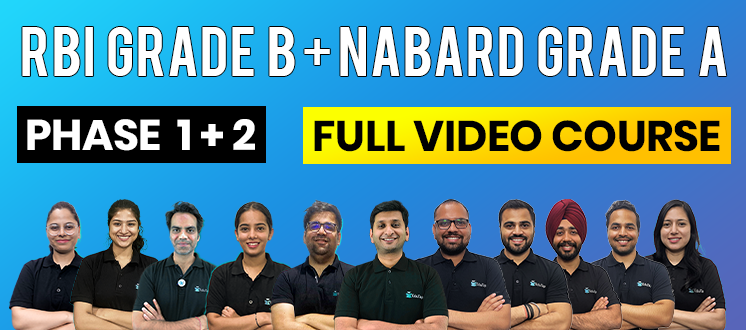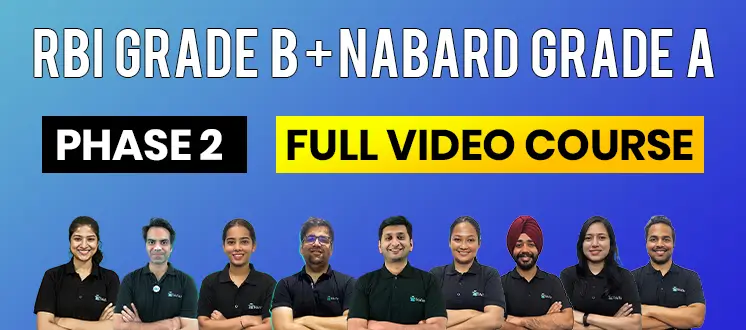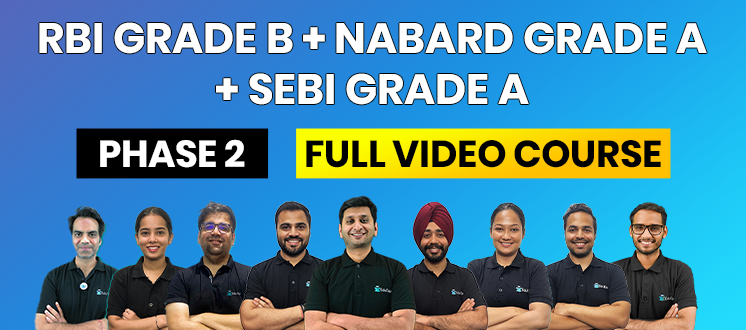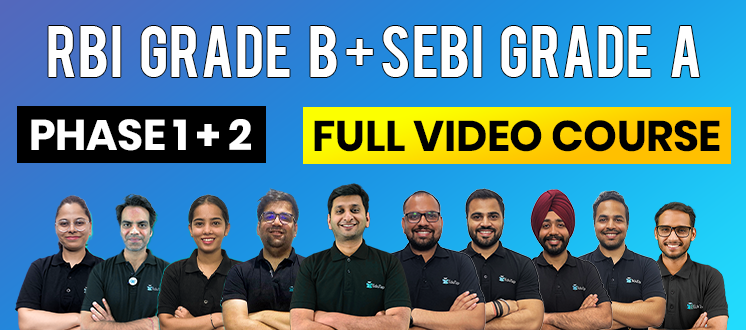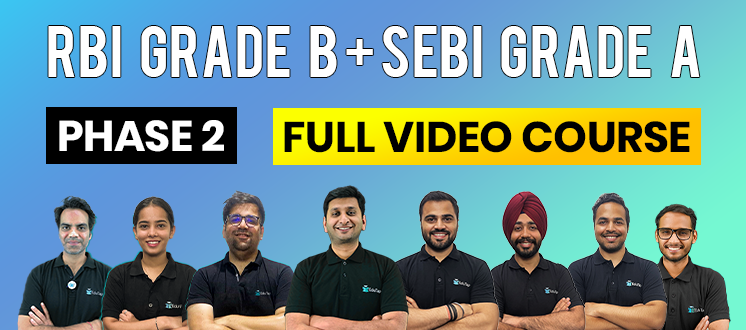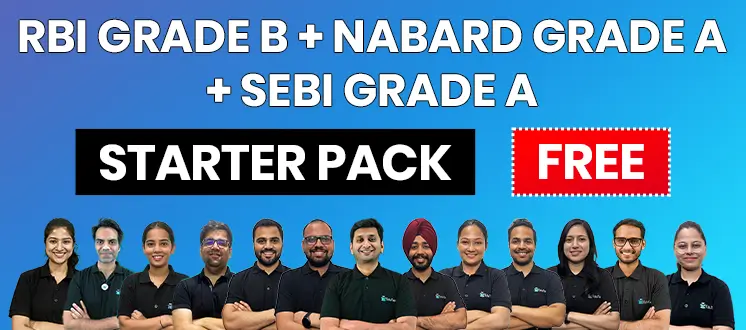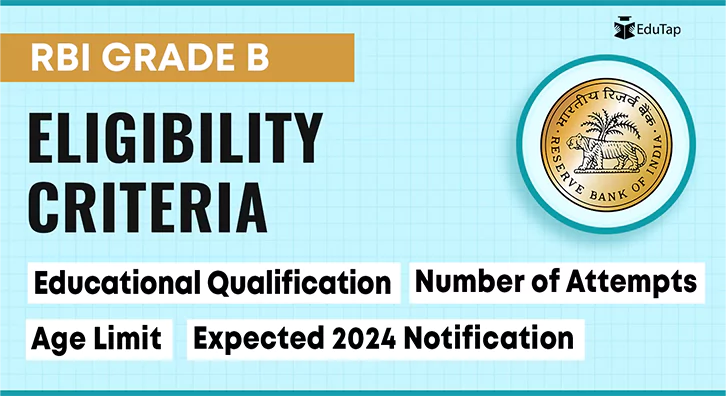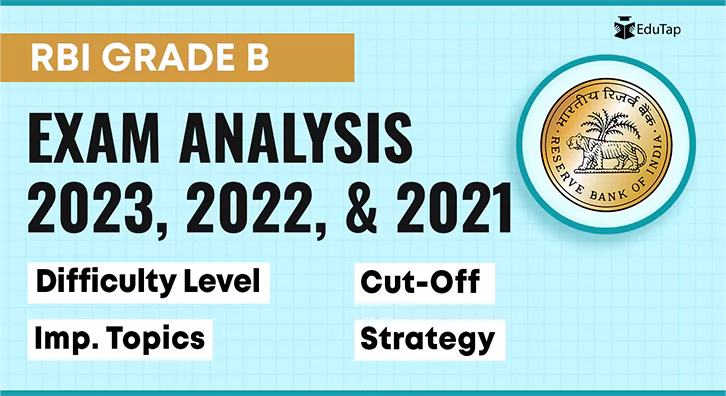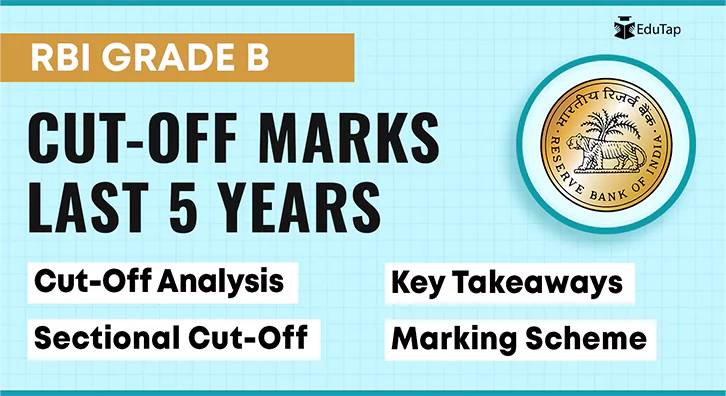RBI Grade B officer is a highly respectable position that offers an excellent salary, allowances, and various other perks. These benefits are one of the motivating factors for aspirants to become RBI Grade B officers and secure their future. The job profile of an RBI Grade B officer depends on the department in which they are posted. Let’s have a look at some of the responsibilities of an RBI Grade B officer.
Regulation, Supervision and Enforcement
RBI Grade B officers participate in the policy formulation, onsite and offsite supervision, risk supervision and data analysis.
Financial Markets & Foreign Exchange
RBI Grade B officers look after the financial markets regulation and development and conduct auctions on behalf of Central and State Governments, etc.
Banking, Payments, Financial Inclusion & Currency Management
RBI Grade B officers also take care of the demand-supply analysis of currency in circulation, carry out the policy work related to opening of current accounts for Banks & governments, act as Lead District Officer for Lead Bank Schemes in Regional Offices, etc.
Monetary Policy, Research & Financial Stability
RBI Grade B officers provide technical inputs to the Monetary Policy Committee, research on macroeconomic issues and primary statistics and indicators, research-oriented work, etc.
Governance, Human Resource, Support & Customer Service
RBI Grade B officers actively evolve and implement policies on Recruitment, Placement, Promotions, etc. They also oversee grievance redressal mechanisms, provide inputs for strategy framework, etc.
The Reserve Bank of India (RBI) Grade B Officer exam attracts thousands of aspirants every year. Understanding the eligibility criteria—age limits and educational qualifications—is crucial for aspirants to ensure they meet the necessary prerequisites.
RBI Grade B eligibility criteria include two major categories:
- Age Limit
- Educational Qualification
RBI Grade B Age Limit
Knowing the age limit before applying for the RBI Grade B exam is essential to avoid disqualification. The age limit is subcategorized into two limits: upper and lower limits. The details of the same are given below:
| RBI Grade B Age Limit (as per the notification date) | |
| Minimum Age Limit | Maximum Age Limit |
| 21 Years | 30 Years |
The age eligibility for the RBI Grade B exam is based on the cut-off date mentioned in the notification, which is the 1st of the month in which the notification is released.
This means that candidates must fall within a specific age range as per the cut-off date to be eligible for the examination.
RBI Grade B: Age Limit Relaxation
There is some specific relaxation w.r.t the upper age limit for certain categories. However, there is no age relaxation for the lower limit. The candidate must be above 21 years as of the cut-off date mentioned in the notification.
| RBI Grade B: Age Limit Relaxation | |||
| SNo. | Category | Age Relaxation | Upper Age Limit |
| 1 | General | None | 30 |
| 2 | Other Backward Castes (OBC) | 3 Years | 33 |
| 3 | SC/ST | 5 Years | 35 |
| 4 | Ex-Servicemen (including Military Services) | 5 Years | 35 |
| 5 | Ex-Bank Employees | 5 Years | 35 |
| 6 | PwD (General/EWS) | 10 Years | 40 |
| 7 | PwD (OBC) | 13 Years | 43 |
| 8 | PwD (SC/ST) | 15 Years | 45 |
Important Notes:
- No cumulative age relaxation will be available to any applicant, as provided above.
- The upper age limit for candidates possessing M.Phil. and PhD qualifications will be 32 and 34 years, respectively.
RBI Grade B Eligibility: Educational Qualification
In addition to adhering to the age limit, meeting the RBI Grade B educational qualification is equally essential. Please consider the below-mentioned points before finding out the educational eligibility.
- A candidate can apply for only one discipline. It means the candidate applying for general discipline cannot apply for specialised discipline and vice versa.
- In case of multiple applications within disciplines, only the latest submitted application will be considered valid, and the fee against all other applications will be forfeited.
- PWBD candidates applying against Unreserved (UR) posts will not be eligible for percentage relaxation in Educational Qualification. However, they may be eligible for age and fee relaxation.
- You must have the required educational qualification by the cut-off date for age. Candidates with results declared after the notification date are ineligible to apply.
| Minimum Educational Qualifications for the RBI Grade B General Posts |
| Graduation in any discipline/Equivalent technical or professional qualification with minimum 60% marks (50% for SC/ST/PwBD applicants)
OR PostGraduation in any discipline/Equivalent technical or professional qualification with minimum 55% marks (pass marks for SC/ST/PwBD applicants) in aggregate of all semesters/years. Note: Graduation Level: Any such course from a recognised University/Institute that is taken after Class XII and is at least of 3 years’ duration/candidates possessing professional or technical qualifications which are recognised by the Government as equivalent to professional or technical graduation will be eligible for admission to the examination, subject to obtaining minimum marks prescribed above. Post-Graduation Level: Any such course from a recognised University/Institute that is taken after Graduation and is at least of 2 years’ duration/recognised by the Government as equivalent to professional or technical Post-graduation will be eligible for admission to the examination, subject to obtaining minimum marks prescribed above. |
Now, let’s understand the Academic Aggregate Score.
Academic Aggregate Score: CGPA or Percentage
Some universities or institutions use Aggregate Grade Points (e.g., CGPA/OGPA/CPI) instead of awarding specific class or percentage marks. In this case, if the university/institute has established criteria for converting Aggregate Grade Points into class and/or percentage marks, those criteria will be accepted and followed.
However, if the university/institute does not provide specific criteria for the conversion of Aggregate Grade Points into class and/or percentage marks, the following procedure will be implemented:
| Academic Aggregate Score | ||
| SNo. | Equivalent CGPA/OGPA/CPI or similar terminologies allotted on a 10-point scale | Aggregate Percentage of Marks |
| 1 | 6.75 | 60% |
| 2 | 6.25 | 55% |
| 3 | 5.75 | 50% |
Important Note: Your aggregate grade point or percentage of marks will be calculated over the entire course. If your aggregate grade point (CGPA/OGPA/CPI, etc.) is out of a number other than 10, it will be converted to a scale of 10 and then calculated as shown above.
The RBI Grade B exam is a 3-phase selection process. Each phase is designed to assess the different skills and knowledge required for the role.
- Phase 1 (Pre)
- Phase 2 (Mains)
- Phase 3 (Interview)
RBI Grade B Phase 1 Pattern
Phase 1 is a preliminary screening round. It is an objective-type test that evaluates the candidate’s fundamental knowledge and understanding of various subjects. It consists of four sections, each assessing different areas of aptitude and competence.
Here is the RBI Grade B Phase 1 exam pattern:
| RBI Grade B Phase 1 Pattern | ||||
| SNo. | Subject | No. of Questions | Maximum Marks | Total Duration |
| 1 | General Awareness | 80 | 80 | 25 minutes |
| 2 | Reasoning | 60 | 60 | 45 minutes |
| 3 | English | 30 | 30 | 25 minutes |
| 4 | Quantitative Aptitude | 30 | 30 | 25 minutes |
| Total | 200 | 200 | 120 minutes | |
| Other Details of RBI Grade B Phase 1 Pattern | |
| Total Marks | 200 |
| Total Number of Questions | 200 |
| Total Duration | 2 Hours (120 minutes) |
| Negative Marking | 0.25 (1/4th for every wrong answer) |
| Sectional Timing | Yes (Details in the above table) |
| Mode | Online (Computer Based Test) |
| Nature | Qualifying |
| Language | Hindi & English (Except the test of English) |
| Overall Cut-Off Marks | Overall cut off marks are decided as per the calling ratio. |
| Sectional Cut-Off Marks | Yes, there are sectional cut-off marks which are decided as per the calling ratio. |
Candidates who achieve the minimum qualifying marks (overall as well as section-wise) set by the RBI in the Phase 1 exam are eligible to appear for Phase 2.
RBI Grade B Phase 2 Pattern
Phase 2 is the second stage of the selection process. It evaluates candidates in three important subjects, each covering various aspects relevant to the role of an RBI Grade B officer. Here is the RBI Grade B Phase 2 pattern:
| RBI Grade B Phase II Pattern | |||||||
| SNo. | Name of the Paper | Type | No. of Questions | Time Limit | Total Time | Marks | Total Marks |
| 1 | Paper-I
Economic and Social Issues |
50% Objective | 30 for Objective | 30 minutes | 120 minutes | 50 | 100 |
| 50% Descriptive | 06 for Descriptive, out of which 4 are to be attempted | 90 minutes | 50 | ||||
| 2 | Paper-II English (Writing Skills) | Descriptive | 3 Questions
(Precis, RC, & Essay) |
90 minutes | 90 minutes | 100 | 100 |
| 3 | Paper-III Finance and Management | 50% Objective | 30 for Objective | 30 minutes | 120 minutes | 50 | 100 |
| 50% Descriptive | 06 for Descriptive, out of which 4 are to be attempted | 90 minutes | 50 | ||||
| Other Details of RBI Grade B Phase 2 Pattern | |
| Total Marks | 300 |
| Negative Marking (Objective questions) | 1/4th for every wrong answer, i.e.,
0.25 for 1 mark questions 0.50 for 2 mark questions |
| Mode | Online (Computer Based Test) |
| Language | Hindi & English for both objective and descriptive papers
(Except for the test of English) |
| Cut-Off Marks | Cut off marks are decided as per the calling ratio |
Candidates who qualify in Phase 2 are then shortlisted for a psychometric test and interview. The interview process evaluates the candidate’s knowledge, skills, and suitability for the RBI Grade B officer role.
RBI Grade B Phase 3 (Interview) Pattern
The RBI Grade B interview is the final stage of the selection process for candidates who have successfully cleared the Phase 1 and 2 examinations. Here is the RBI Grade B Phase 3 pattern:
- Candidates need to undergo a psychometric test before appearing for the interview.
- No marks are allotted for the psychometric test.
- After the psychometric test, there is an interview for 75 marks.
- Candidates may opt for the interview either in Hindi or English.
The final selection is based on the aggregate marks obtained in Phase 2 (Paper I, II, III) and the interview.
Understanding the RBI Grade B syllabus significantly impacts the preparation strategy and success in the examination. Below is the detailed syllabus of RBI Grade B Phases 1 and 2.
RBI Grade B Phase 1 Syllabus
The official notification does not mention the detailed syllabus for RBI Grade B Phase 1. Therefore, to make it easy for you, we have analysed the previous years’ questions (PYQs) to define the scope of the Phase 1 syllabus.
Reasoning Ability
Here is the detailed reasoning syllabus for the RBI Grade B Phase 1 exam:
- Alphabetical, Alphanumeric Series
- Coding & Decoding
- Syllogism
- Direction Sense
- Inequality
- Ranking
- Blood Relation
- Seating Arrangement
- Puzzles
- Machine Input Output
- Statement – Assumption
- Statement – Course of Action
- Cause and Effect
- Statement Argument
- Statement Conclusion
- Data Sufficiency
Quantitative Aptitude
Here is the detailed Quantitative Aptitude syllabus for RBI Grade B Phase 1:
- Percentage
- Profit & Loss, Discount
- Ratio & Proportion
- Simplification
- Simple & Compound Interest
- Time & Work
- Pipes & Cistern
- Number Series & Number System
- Time, Speed, & Distance
- Trains & Boats
- Mixture
- Average
- Ages
- Partnership
- Area, Volume
- Probability
- Data Interpretation & Data Sufficiency
- Quadratic Equation
- Quantity Comparison
Here is the detailed English syllabus for RBI Grade B Phase I: GA is divided into 2 parts, static and current affairs, and their weightage in the exam is 10-15 marks and 65-70 marks, respectively. The following topics are most frequently asked from the general awareness section: The RBI Grade B Phase 2 comprises three papers: Economic and Social Issues, English (Writing Skills), and Finance and Management. There is no defined syllabus for descriptive English, but as per the paper scheme, 3 questions are asked. These 3 questions are asked under the following topics- a) Financial System b) Financial Markets c) General Topics d) ManagementEnglish Language
General Awareness (GA)
Current GA Syllabus for RBI Grade B Phase 1 Exam
Static GA Syllabus for RBI Grade B Phase 1 Exam
RBI Grade B Phase 2 Syllabus
Paper-I: Economic and Social Issues (ESI)
Paper-II: English (Writing Skills)
Paper-III: Finance and Management
RBI Grade B 2023 Phase 1 Cut-Off
Here are the Phase 1 cut-off marks of the RBI Grade B 2023 exam.
| RBI Grade B Phase 1 Cut-Off (2023) | ||||||
| Maximum Marks = 200 | Category & Cut-Off Marks | |||||
| General/UR | EWS | OBC | SC | ST | PwBD (OH/HI/VH/MD) | |
| 54.25 | 54.25 | 54.25 | 52.75 | 44.75 | 40.25 | |
| RBI Grade B Phase 1 Sectional Cut-Off (2023) | ||||||
| Section | Category | |||||
| General/UR | EWS | OBC | SC | ST | PwBD (OH/HI/VH/MD) | |
| General Awareness (Maximum Marks = 80) | 12.0 | 12.0 | 8.0 | 6.25 | 6.25 | 6.25 |
| Reasoning (Maximum Marks = 60) | 9.0 | 9.0 | 6.0 | 4.75 | 4.75 | 4.75 |
| English Language (Maximum Marks = 30) | 4.50 | 4.50 | 3.0 | 2.25 | 2.25 | 2.25 |
| Quantitative Aptitude (Maximum Marks = 30) | 4.50 | 4.50 | 3.0 | 2.25 | 2.25 | 2.25 |
| Total Score/ Aggregate (Maximum Marks = 200) | 54.25 | 54.25 | 54.25 | 52.75 | 44.75 | 40.25 |
RBI Grade B 2022 Final Cut-Off
Here are the final cut-off marks of the RBI Grade B 2022 exam.
| RBI Grade B Final Cut-Off (2022) | ||||||
| Aggregate marks in Phase 2 and Interview (total of 375 marks) | Category & Cut-Off Marks | |||||
| General/UR | EWS | OBC | SC | ST | PwBD
(OH/HI/VH/MD) |
|
| 234.50 | 187.50 | 223.00 | 202.50 | 179.00 | 208.25 (Gen)196.75 (OBC)176.25 (SC)EWS & ST in PwBD not qualified | |
| RBI Grade B Phase 2 Cut-Off (2022) | ||||||
| Aggregate cut-off marks in paper I, paper II and paper III (out of a total of 300 marks) | Category & Cut-Off Marks | |||||
| General/UR | EWS | OBC | SC | ST | PwBD
(OH/HI/VH/MD) |
|
| 171.25 | 171.25 | 167.00 | 150.50 | 150.25 | 150.25 | |
| RBI Grade B Phase 1 Cut-Off (2022) | ||||||
| Maximum Marks = 200 | Category & Cut-Off Marks | |||||
| General/UR | EWS | OBC | SC | ST | PwBD (OH/HI/VH/MD) | |
| 63.75 | 63.75 | 60.25 | 55.25 | 50.75 | 49.75 | |
| RBI Grade B Phase 1 Sectional Cut-Off (2022) | ||||||
| Section | Category & Cut-Off Marks | |||||
| General/UR | EWS | OBC | SC | ST | PwBD (OH/HI/VH/MD) | |
| General Awareness (Maximum Marks = 80) | 12.0 | 12.0 | 8.0 | 6.25 | 6.25 | 6.25 |
| Reasoning (Maximum Marks = 60) | 9.0 | 9.0 | 6.0 | 4.75 | 4.75 | 4.75 |
| English Language (Maximum Marks = 30) | 4.50 | 4.50 | 3.0 | 2.25 | 2.25 | 2.25 |
| Quantitative Aptitude (Maximum Marks = 30) | 4.50 | 4.50 | 3.0 | 2.25 | 2.25 | 2.25 |
| Total Score/ Aggregate (Maximum Marks = 200) | 63.75 | 63.75 | 60.25 | 55.25 | 50.75 | 49.75 |
RBI Grade B 2020-21 Cut-Off
Below, we have provided the overall cut-off of RBI Grade B 2020-21, including the final, Phase 2, Phase 1, and sectional cut-off.
RBI Grade B 2020-21 Final Cut-Off
From 2020-21, the weightage of interview increased from 50 marks to 75 marks. Here is the list of final cut-off marks analysis of the RBI Grade B 2020-21 exam.
| RBI Grade B Final Cut-Off (2020-21) | ||||||
| Aggregate marks in Phase 2 and Interview (a total of 375 marks) | Category & Cut-Off Marks | |||||
| General/UR | EWS | OBC | SC | ST | PwBD (OH/HI/VH/MD) | |
| 252.25 | 241.25 | 212.25 | 205.25 | 218.25 | Gen – 226OBC – 223.75 | |
RBI Grade B 2020-21 Phase 2 Cut-Off
Here are the Phase 2 cut-off marks of the RBI Grade B 2020-21 exam.
| RBI Grade B Phase 2 Cut-Off (2020-21) | ||||||
| Aggregate cut-off marks in paper I, paper II and paper III (out of a total of 300 marks) | Category & Cut-Off Marks | |||||
| General/UR | EWS | OBC | SC | ST | PwBD (OH/HI/VH/MD) | |
| 187.75 | 187.75 | 167.5 | 166.75 | 187.75 | 166.75(HI, LD, MD) 169.75(VI) | |
RBI Grade B 2020-21 Phase 1 Cut-Off
Here are the Phase 1 cut-off marks of the RBI Grade B 2020-21 exam.
| RBI Grade B Phase 1 Cut-Off (2020-21) | ||||||
| Maximum Marks = 200 | Category & Cut-Off Marks | |||||
| General/UR | EWS | OBC | SC | ST | PwBD (OH/HI/VH/MD) | |
| 66.75 | 66.75 | 63.75 | 53.50 | 52.75 | 52.75 | |
RBI Grade B 2020-21 Phase 1 Sectional Cut-Off
Here are the Phase 1 sectional cut-off marks of the RBI Grade B 2020-21 exam.
| RBI Grade B Phase 1 Sectional Cut-Off (2020-21) | ||||||
| Section | Category | |||||
| General/UR | EWS | OBC | SC | ST | PwBD (OH/HI/VH/MD) | |
| General Awareness (Maximum Marks = 80) | 16 | 16 | 12 | 0.25 | 0.25 | 10.25 |
| Reasoning (Maximum Marks = 60) | 12 | 12 | 9 | 7.75 | 7.75 | 7.75 |
| English Language (Maximum Marks = 30) | 06 | 06 | 4.50 | 3.75 | 3.75 | 3.75 |
| Quantitative Aptitude (Maximum Marks = 30) | 06 | 06 | 4.50 | 3.75 | 3.75 | 3.75 |
| Total Score/ Aggregate (Maximum Marks = 200) | 66.75 | 66.75 | 63.75 | 53.50 | 52.75 | 52.75 |
Preparing for the RBI Grade B exam requires a structured and strategic approach. To help you through this journey, refer to this sample detailed 7-month plan that you can tailor to align with your specific strengths, weaknesses, and the time at your disposal.
Here is the 7-Months RBI Grade B manager preparation strategy:
| 7-Months RBI Grade B Manager Preparation Strategy | |||||
| SNo. | Week 1 to 5 | Week 6 to 16 | Week 17 to 21 | Week 22 to 27 | Week 28 to 35 |
| 1 | Management | Finance | ESI | Current Affairs | Current Affairs |
| 2 | Reasoning | Quant | Descriptive English (DE) | English | Phase 1 Mock Tests |
| 3 | Management Answer Writing | Finance Answer Writing | ESI Answer Writing | Revise QRE | Revise QRE and CA |
| 4 | Revise Management | Revise Finance | Write one answer daily | Phase 2 Mock Test | |
Important Note:
- This study plan requires 4 hours daily (Monday to Saturday). Keep Sunday for weekly revisions.
Week 1 to 5
1. Management
- Dedicate at least 2.5 hours daily to management.
- You should read all the chapters on management multiple times to score good marks, i.e., 45 out of 50. However, if time is constrained make sure to cover the important topics, also, you can skip videos.
- Focus on understanding the concepts as the pattern of the questions is not bookish but rather application-based.
- Practice lots of MCQs.
You must cover the below-mentioned 4 pillars of the past 3-5 months for Phase 1 and the past 6-8 months for Phase 2:2. Reasoning
3. Management Answer Writing
Week 6 to 16
1. Finance
2. Quant
3. Finance Answer Writing
4. Revise Management
Week 17 to 21
1. ESI
2. ESI Answer Writing
3. Descriptive English (DE)
4. Revise Finance
Week 22 to 27
1. Current Affairs
2. English
3. Revise QRE
4. Start Answer Writing
Week 28 to 35
1. New Current Affairs
2. Phase 1 Mock Test
3. Revise QRE and CA
4. Phase 2 Mock Test
General Tips:
Free Resouces
SELECT YOUR ONLINE MENTORSHIP COURSE
Strengthen your exam preparation with true MENTORSHIP and choose the course as per your learning needs.
OUR SUPER MENTORS
Meet our extraordinary teachers who are synonymous with expertise in their subjects. They are highly acclaimed for adding immense value to students’ preparation. Our students owe their success to them!

- B.Tech, MBA
- Content Head at EduTap
- Guided Aspiring Learners

- B.A (Maths), M.Sc (Statistics)
- Exceptional Teaching Skills
- The Ultimate ‘Quant Guru’

- Bachelor of Commerce
- Simplifies Current Affairs
- Guided Aspiring Learners

- M.A English
- The Ultimate English Mentor
- Our ‘Shashi Tharoor’

- BMS (Finance)
- DBF (JAIIB) Certified
- Guided Aspiring Learners

- B.Tech (Mechanical)
- Former RBI Grade B aspirant
- Guided Aspiring Learners

- B.Sc in PCM
- Promotes Conceptual Understanding
- Introduces Different Approaches

- Integrated M.Sc in Economics
- Gold Medalist
- Teaches from scratch

- LLB, MA (Economics)
- Company Secretary
STUDENT TESTIMONIALS
Listen to our students share their learning experiences as part of the EduTap family!
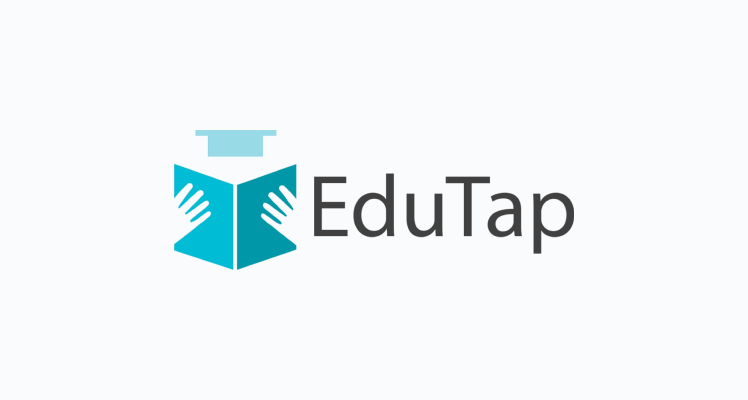



FREE RESOURCES LIBRARY
Dive deep into our free knowledge library and access Video Lectures, Previous Year Questions, Mock Tests, E-Books, Current Affairs, and more.
Memory-based year-wise compiled previous year question papers of all exams.
Weekly current affairs compilations important covering newspapers and websites.
Online lectures by our expert faculty to build a strong foundation of subjects.
Downloadable PDFs covering important topics in a crisp and easy to digest format.
Chapter-wise, sectional and full-length tests to assess your actual preparation level.
RECOMMENDED ARTICLES
Stay up-to-date with the latest articles written after thorough research of RBI Grade B exam and excel in your exam preparation.
Frequently Asked Questions (FAQs)
The RBI Grade B exam is held once a year.
Start by understanding the syllabus thoroughly and creating a study plan accordingly. Cover each topic comprehensively, refer to standard textbooks, practise previous year question papers, and attempt mock tests. Stay updated with current affairs and economic developments.
The core subjects and topics remain relatively consistent; however, minor variations or updates may occur. It’s essential to review the latest official notification for the most accurate and updated syllabus for that particular year.
The RBI Grade B exam is challenging due to its focus on economic and financial concepts. The inclusion of a descriptive paper in English further adds to the complexity.
While a strong mathematical background is beneficial, the emphasis on maths in the RBI Grade B exam is comparatively lower than the other competitive exams. This is because the mathematical section is limited to Phase 1 and is qualifying in nature. In the RBI Grade B preparation, focusing more on the Economic and Finance components is essential.
While coaching classes are not mandatory, they can provide structured guidance and support. Additionally, they provide essential study materials, streamlining the process and saving you the time and effort of navigating through numerous sources. Self-study, combined with online resources and mock tests, can also be effective for preparation.
No, work experience is not mandatory for RBI Grade B eligibility. However, certain posts may have specific experience criteria.
EXPLORE OTHER EXAMS
Discover more about other related exams of the Regulatory Bodies Segment.

IFSCA Grade A officer dives deep into the regulatory landscape of financial services, encompassing banking, insurance, securities markets, and more.

Work as an Assistant Manager with Securities and Exchange Board of India

Work as an Assistant Manager with Securities and Exchange Board of India
Work as an Assistant Manager with National Bank for Agriculture and Rural Development

